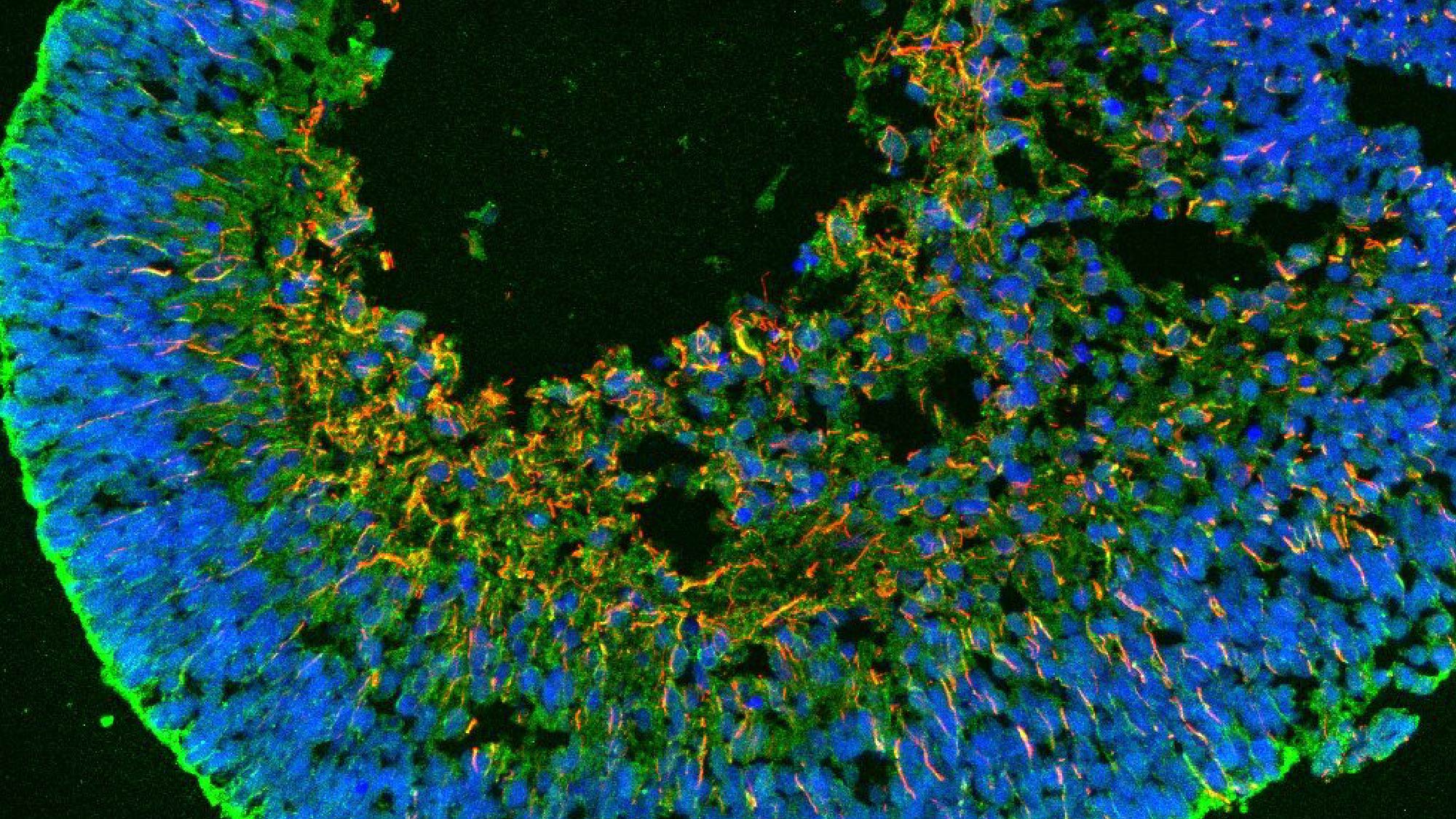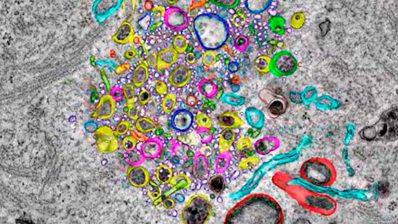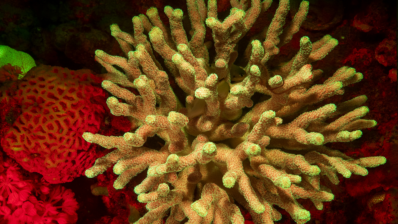According to a recent study, the human retina may be able to regenerate itself thanks to cell fusion. This is shown in this image by Sergi Bonilla, researcher at the Centre for Genomic Regulation (CRG). In it we can see a cross-section of a retinal organoid with different types of neurons marked in red (ganglia) and green (Müller glia).
In nature, there are animals capable of regenerating cells, tissues and even entire organs. There are also animals that are able to restore a limb and even develop a whole new organism from a small part. This happens thanks to cell regeneration, a process by which stem cells differentiate into the cell type that the organism needs.
One possible regeneration process is the fusion of two cells, something that has already been detected in humans in the liver, brain and gastrointestinal tract. Now, the CRG research team led by Pia Cosma has joined forces with the Institute for Bioengineering of Catalonia (IBEC) and the Barraquer Ophthalmology Centre to study whether cell fusion can happen in the retina.
To do this, they fused in vitro adult stem cells, derived from human adipose tissue or bone marrow, with Müller glia, cells that play an important role in maintaining the function and structure of the retina. In this way, they were able to obtain hybrid cells that, when injected into a developing retinal organoid – a model that mimics the function of the human retina – were able to differentiate into neurons and thus regenerate human retinal tissue.
There is still a lot of work to be done and this process needs to be fully understood. But these findings are of great importance as they bring us closer to understand how the regenerative capacity of the human retina works and they could open up the possibility of developing future treatments.
Bonilla-Pons, S., Nakagawa, S., Bahima, E., Fernández-Blanco, Á., Pesaresi, M., & D’Antin, J. et al. (2022). Müller glia fused with adult stem cells undergo neural differentiation in human retinal models. Ebiomedicine, 77, 103914. doi: 10.1016/j.ebiom.2022.103914







